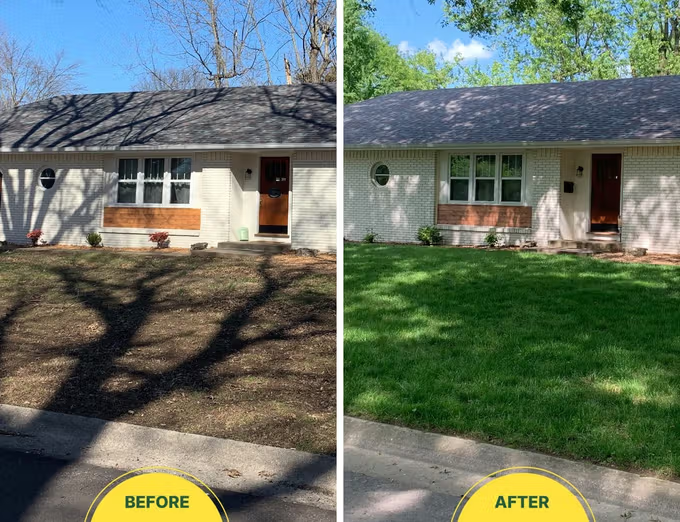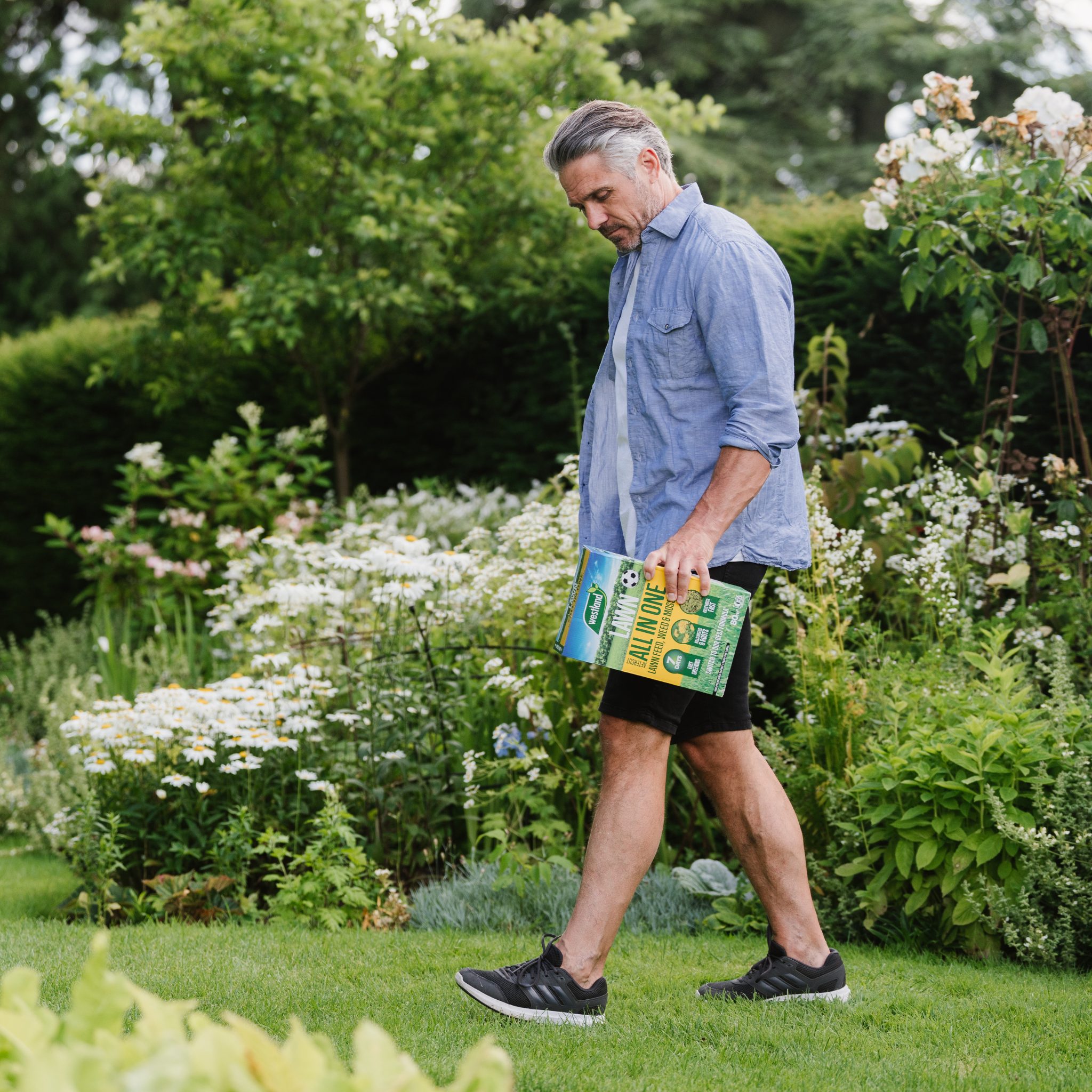How to Turn Brown Grass Green Fast
Last Updated on March 31, 2025 by Duncan
Your grass can be brown due to two primary reasons: due to dormancy or death. Before you do anything, first find out whether your grass is dead or dormant.
You can do this by tugging on the grass plants. If the grass easily pulls out of the ground, it’s most likely dead, and you should plan to plant a new one.
On the other hand, if the roots hold fast, the grass is probably dormant, and you should plan how to get it back to life. Wondering how to turn brown grass green fast? Here are tricks to do it:
Schedule your watering
Grass will turn brown to conserve water during periods of limited rainfall. It’s always recommended you let drought-induced brown grass turn green on its own as the rainfall increases, but if you want green grass fast, you should water it.
Be strategic about how you water the lawn. The best way to go about it is to give the grass an inch of water every week with your lawn sprinkler.
To ensure you are sprinkling the water in all areas, adjust the sprinkler head, and ensure there are no spots the sprinkler isn’t reaching.
The best time to water is late in the evening or early in the day before the sun comes up, and the heat burns off the water.
Remember that overwatering can also cause the grass to turn brown, so schedule your watering in increments where the water will drain through and dry out before you add more water.
Get rid of weeds
Weeds siphon vital nutrients from the soil that should go to grass, leaving your lawn dry and brown. To reverse this, you need to get rid of weeds.
One way of killing the weeds is by using a selective herbicide that targets the weeds without damaging the grass.
You should then apply a pre-emergent herbicide over the lawn to prevent new weed seeds from sprouting. For more tips on how to weed your lawn, read this article.
Aerate the lawn
Aerating the lawn opens it up so water, air, and nutrients can easily reach the roots and revive it.
Aerating the lawn also helps the yard to dry out fast, which not only comes in handy at preventing browning due to overwatering, it also prevents lawn diseases from coming about.
Sharpen the lawnmower blades
Sometimes, browning is due to the use of a dull lawnmower blade, so by simply sharpening the blades, you will turn around your lawn.
Luckily, it’s easy to sharpen the lawnmower blades even without taking them to a sharpening technician. Here is a guide on how to sharpen lawn mower blades.
Flush out fertilizer salts
Your lawn mowing contractor might have told you that to maintain your grass green, you need to fertilize it. While this is true, applying too much fertilizer might scorch the grass, turning it brown.
If you recently applied fertilizer and noticed your grass turning brown, you should move with haste and try to reverse it. Begin with watering the grass thoroughly to leach the excess fertilizer out of the grass’ root zone.
You should then apply an inch of water to the lawn for the next week to flush out the excess fertilizer salts from the grassroots.
To avoid over-feeding your lawn in the future, apply the fertilizer according to the manufacturer-recommended instructions. To improve absorption and reduce the risk of fertilizer burn, use slow-release fertilizers.
Restore the soil pH
When your soil pH is too alkaline or acidic, your grass can suffer from chlorosis, leading to brown patches.
As a measure to restore your brown lawn, check your soil pH with a test kit such as this one. If your soil pH is higher than 7.2, lower it by applying sulfur.
The amount of sulfur you apply depends on the pH level and type of soil. The higher the soil pH and loamier or clay-bases the soil, the more the sulfur you add.
For example, if you have sandy soil with a 7.5 pH, you need to apply 10-15 pounds of sulfur for every 1,000 square feet for you to reach the optimal 6.5 pH.
Loamy soil with the same pH will need 20-25 pounds of sulfur per 1,000 square feet.
As you are adding sulfur to the grass, reduce the frequency of watering as overwatering reduces iron uptake, which can lead to repeat cases of browning.
Have your pets do their business elsewhere
We love our canine and feline friends, but their urine contains high levels of ammonia that tend to kill grass, leaving you with unsightly brown patches.
To revive the brown turf, have the pets go somewhere else or take them for walks.
You should then try to restore the soil pH by covering the affected area with a layer of ground limestone. For best results, apply 2-5 pounds of limestone per 100 square feet.
Let the limestone sit on the lawn for a week, and if the grass doesn’t come back, cover the limestone with topsoil and plant new grass.
Turn brown grass green fast by killing grubs.
If you live in areas infested with grubs, chances are the browning is due to their damage. Grubs feed on grassroots, and as the grass decays, brown patches appear.
To determine whether the browning is due to grubs, dig into one of the brown patches and look out for milk-white creatures, curled up into a C-shape.
If there are more than 10 grubs per square foot of sod, you have a grub infestation in your hands that you need to handle as fast as possible.
To get rid of the pests, apply carbaryl. If you don’t like using chemicals in your lawn, use nematodes such as roundworms to control the grubs.
It will take 2-3 weeks for new grass shoots to appear after getting rid of the grubs.
Fight fungus
If the thinned out brown grass has a ring-like pattern, chances are you have fungus in your lawn. Fungus thrives in hot, humid areas that are moisture-rich, and to turn your brown grass green fast, you need to get rid of the fungus.
If only a small area is affected, apply a fungicide but if the problem is widespread, let an experienced lawn care expert handle it.
To prevent your lawn from fungal diseases in the future, mow it weekly, aerate it twice a year, and dethatch it when thatch rises an inch in height.


